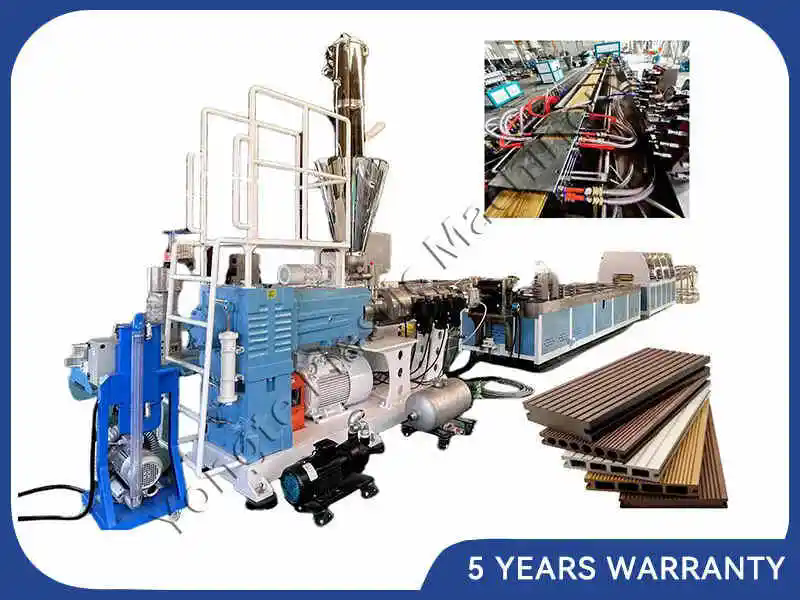How Does a Wood Plastic WPC Extrusion Machine Transform Modern Manufacturing?
2024-11-18
In the world of sustainable manufacturing, the Wood Plastic Composite (WPC) extrusion machine is a game-changer. But how exactly does this innovative technology revolutionize the production of eco-friendly materials while offering unmatched versatility? Let’s dive into its functionality, applications, and benefits.
What Is a Wood Plastic WPC Extrusion Machine?
A WPC extrusion machine is specialized equipment used to create wood plastic composites by combining wood fibers (or flour) with plastic polymers. The process involves melting, mixing, and shaping these materials into durable, versatile products such as decking boards, fencing panels, and interior décor elements.
Why Are WPC Extrusion Machines in High Demand?
1. Sustainability at Its Core
One of the biggest advantages of WPC products is their eco-friendliness. By utilizing recycled plastics and waste wood materials, these machines help reduce environmental impact while offering a durable alternative to traditional wood.
2. High Efficiency and Precision
Modern WPC extrusion machines are designed for seamless operation, producing consistent, high-quality outputs. With automated controls, manufacturers can achieve precise dimensions and surface finishes, minimizing waste and downtime.
3. Versatile Applications
The products created by WPC extrusion machines are widely used across industries, including:
- Construction: Decking, railings, and wall cladding.
- Furniture: Outdoor tables, benches, and chairs.
- Landscaping: Garden fencing and planters.
- Interior Design: Decorative panels and trims.
4. Cost-Effectiveness
WPC materials are long-lasting and require minimal maintenance, offering a cost-efficient solution compared to natural wood or other alternatives. The extrusion process itself is also optimized for bulk production, reducing manufacturing costs.
5. Enhanced Durability
Products manufactured using WPC extrusion machines are highly resistant to moisture, UV rays, and insects. This makes them ideal for both indoor and outdoor applications, particularly in environments prone to harsh weather conditions.
How Does a WPC Extrusion Machine Work?
1. Raw Material Feeding: A combination of wood fibers, plastic resins, and additives are fed into the machine.
2. Extrusion Process: The materials are heated, mixed, and pushed through a mold to create the desired shape.
3. Cooling and Cutting: The extruded material is cooled and cut to specified lengths for final processing.
4. Surface Finishing: Products can be textured, embossed, or laminated for added aesthetics and functionality.
Key Features to Look for in a WPC Extrusion Machine
- High Torque Extruder: For efficient mixing and extrusion.
- Precision Temperature Control: Ensures consistent melting and material flow.
- Customizable Molds: Enables flexibility in product design.
- Energy Efficiency: Modern machines are designed to minimize power consumption while maximizing output.
- Durable Components: Ensures longevity and reduces maintenance costs.
Why Should Manufacturers Invest in WPC Extrusion Technology?
1. Growing Market Demand
As eco-friendly building materials gain popularity, the demand for WPC products is on the rise. Investing in a WPC extrusion machine positions manufacturers to capitalize on this trend.
2. Competitive Advantage
By offering customizable and sustainable products, manufacturers can differentiate themselves in competitive markets.
3. Contribution to a Circular Economy
Using recycled materials in the WPC manufacturing process supports global efforts toward reducing waste and conserving resources.
Conclusion
A Wood Plastic WPC extrusion machine is more than just a piece of equipment—it’s a tool for sustainable innovation. By producing versatile, durable, and eco-friendly materials, it plays a crucial role in shaping the future of manufacturing.
Are you considering adopting WPC extrusion technology for your business? Share your thoughts or questions in the comments below!



